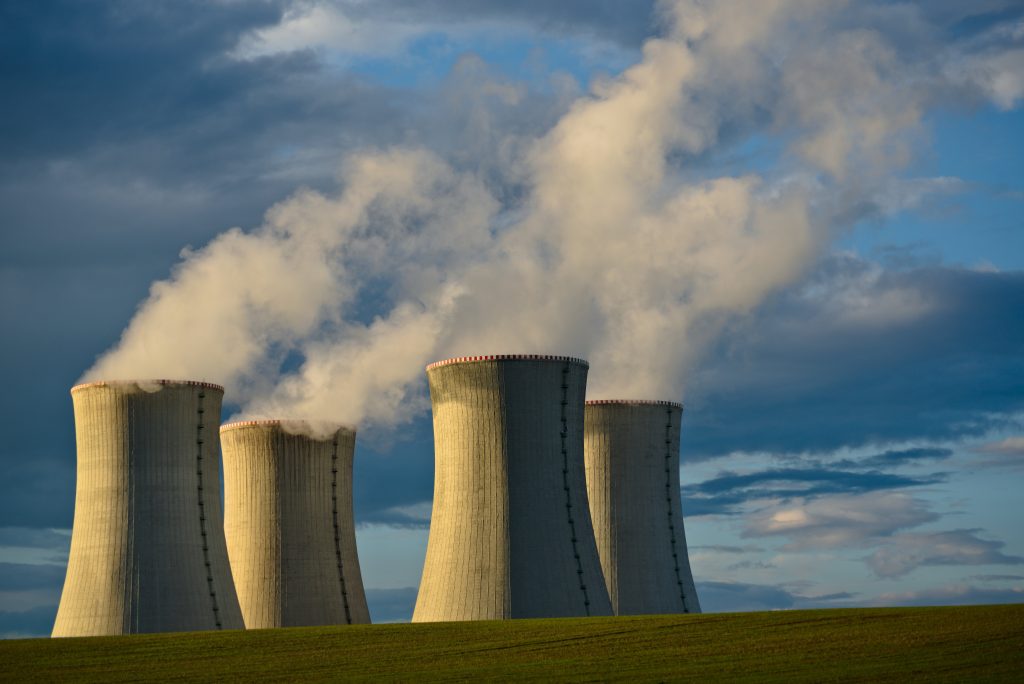We Need to Understand Nuclear’s Past Before We Can Bring It into the Future
Few topics are as contentious as the issue of using nuclear power. Opponents tend to cite disasters such as Fukushima and Chornobyl as evidence that nuclear energy is unsafe, while proponents tout its capacity to power the world without producing harmful emissions. In the era of severe climate change, one thing is for sure — fossil fuels have got to go. Could nuclear power at least serve as a stand-in until renewable energy takes off?
The History of Nuclear Power
Nuclear power often gets less attention than nuclear weapons in history books. To understand nuclear power’s place in the future global energy market, it is essential to define its past:
- 1942: Enrico Fermi builds the world’s first nuclear reactor.
- 1951: The first nuclear power plant — located in the United States — generates electricity.
- 1954: The Obninsk Nuclear Power Plant in the Soviet Union generates electricity for a power grid.
- 1956: The first full-scale nuclear power plant opens in the United Kingdom.
- 1957: The International Atomic Energy Agency is established, promoting the peaceful use of nuclear energy.
- 1961: The first nuclear accident occurs at the National Reactor Testing Station in the U.S. It is a minor incident with three casualties.
- 1979: The Three Mile Island Nuclear Generating Station in the U.S. has a partial meltdown.
- 1986: The Chornobyl Nuclear Power Plant explodes, irradiating the town of Pripyat, Ukraine. It is considered the worst nuclear disaster in history.
- 2011: An earthquake and tsunami struck Japan’s Fukushima Daiichi Nuclear Power Plant, leading to the worst nuclear disaster since Chornobyl. Many people become wary of nuclear power.
- 2021: As numerous power plants reach the end of their life span, nuclear energy supplies less than 10% of the world’s energy for the first time in 40 years.
The Disadvantages of Nuclear Power
Is nuclear power worth reviving? There is no black-or-white answer, but it is possible to weigh the pros and cons of nuclear energy against each other. The downsides include the following.
High Upfront Costs
The capital costs of building a nuclear power plant can run into billions of dollars, making nuclear power less economically feasible than coal, oil or natural gas power plants. Plus, with the price of solar and wind farms falling every year, many investors are more willing to fund renewable energy projects.
Radioactive Waste
Nuclear fission generates waste that can remain radioactive for up to a million years, while nuclear waste sites are only designed to be operational for 10,000 to 100,000 years. That means the next 50,000 or so generations of people may have to avoid nuclear waste sites.
However, there may be other options besides leaving nuclear waste in the ground. One emerging idea is to create fast neutron reactors that can use nuclear waste as fuel. Another idea is to use transmutation, shooting lasers at the waste to change its composition. These proposals are currently in the theoretical stage.
Uranium Mining
Mining or leaching uranium is the first step in creating nuclear power. However, this process creates pollution that can affect miners and people living nearby. Mining is also destructive to the landscape and surrounding ecosystems.
Bioremediation could help clean up pollution left over from uranium mining. Certain strains of bacteria can sequester the toxic substance in their cells.
Potential Disasters
Chornobyl, Fukushima and Three Mile Island forever changed the public perception of nuclear power. It is rare for nuclear power plants to malfunction, but the consequences can be horrific when they do.
Proponents of nuclear energy sometimes point out that other energy sources cause disasters as well, such as the Banqiao hydroelectric dam failure that claimed 150,000 lives in 1975. The main difference is nuclear disasters often render sites uninhabitable for generations.
The Advantages of Nuclear Power
There are several reasons why nuclear power could be a good solution until the infrastructure for solar, wind and hydroelectric power becomes widespread.
No Greenhouse Gas Emissions
The strongest argument for building more nuclear power plants is that coal, oil and gas currently supply most of the world’s energy. These toxic polluters do not cause the dramatic, visible explosions of a malfunctioning nuclear plant, but they kill more people over time. Air pollution has become a serious issue in most of the world’s urban areas, especially in developing countries. Nuclear power could provide a clean energy source to wean people off fossil fuels.
Low Maintenance Costs
Although the initial price of building a nuclear power plant is astronomical, the cost of maintaining one is markedly lower. Operational costs are typically on par or even lower than maintaining a fossil fuel plant.
A Small Land Footprint
Nuclear power plants only need around one square mile to operate, yet they generate enormous amounts of energy. In contrast, sprawling solar and wind farms need extensive areas to produce a fraction of the power.
Safety
Although disasters make for sensational news, the reality is nuclear power plants have a very good track record when it comes to safety. In a hypothetical town of 150,000 people, there would be one nuclear-energy-related death every 33 years. In contrast, 46 people would die every year from fossil fuel pollution. This means nuclear energy causes 99.8% fewer deaths than coal.
Reliability
Unlike solar and wind power, nuclear power plants continue generating energy regardless of weather conditions. This trait makes them more reliable in areas with unpredictable weather.
Nuclear Is Nuanced
Nuclear power may fall by the wayside as renewable energy sources become more advanced. Or, scientists might make advancements that lead to cheaper, safer and more reliable nuclear energy, leading to widespread adoption. The current energy climate is one of constant innovation. As the world moves away from fossil fuels, there is no telling what type of energy will power the future.
| Jane Marsh Editor-in-Chief at Environment.co |




